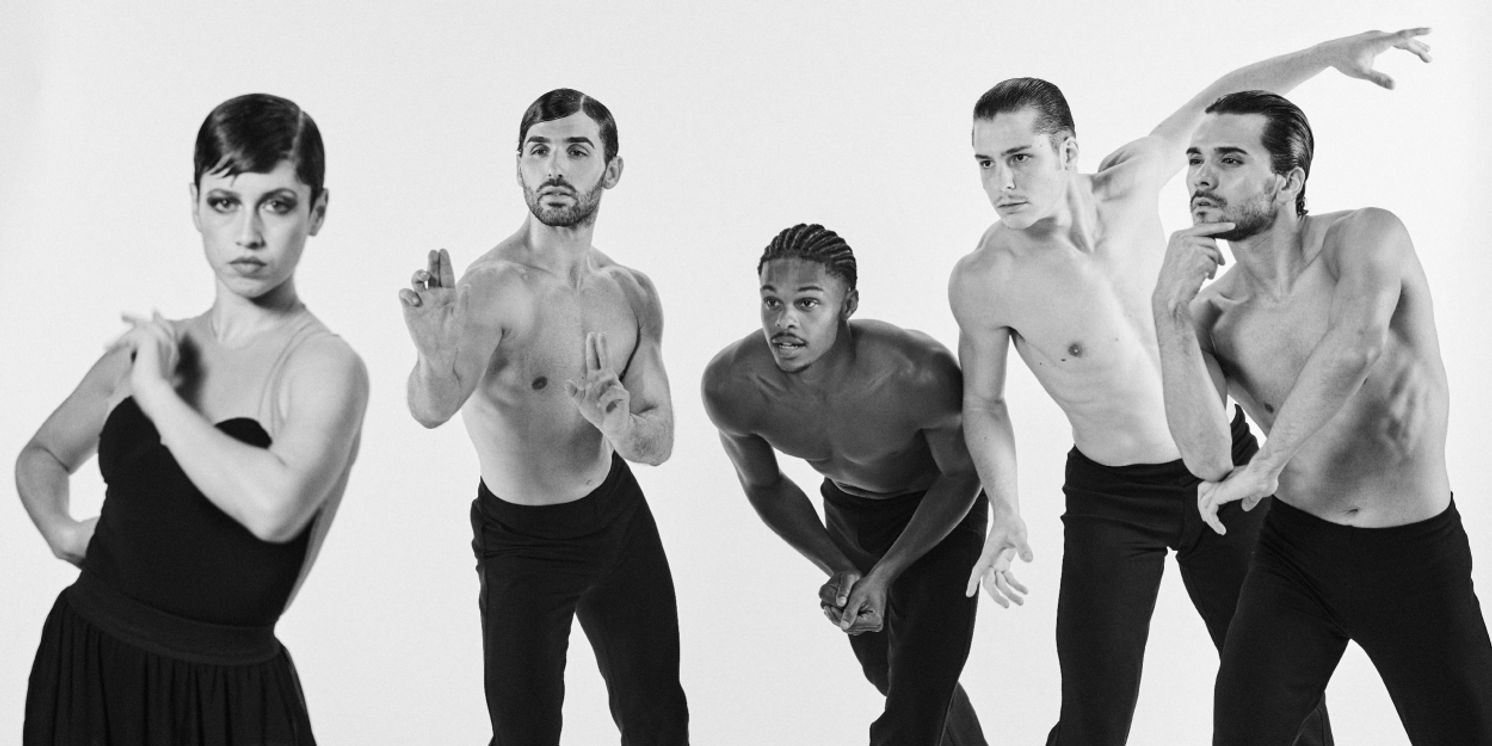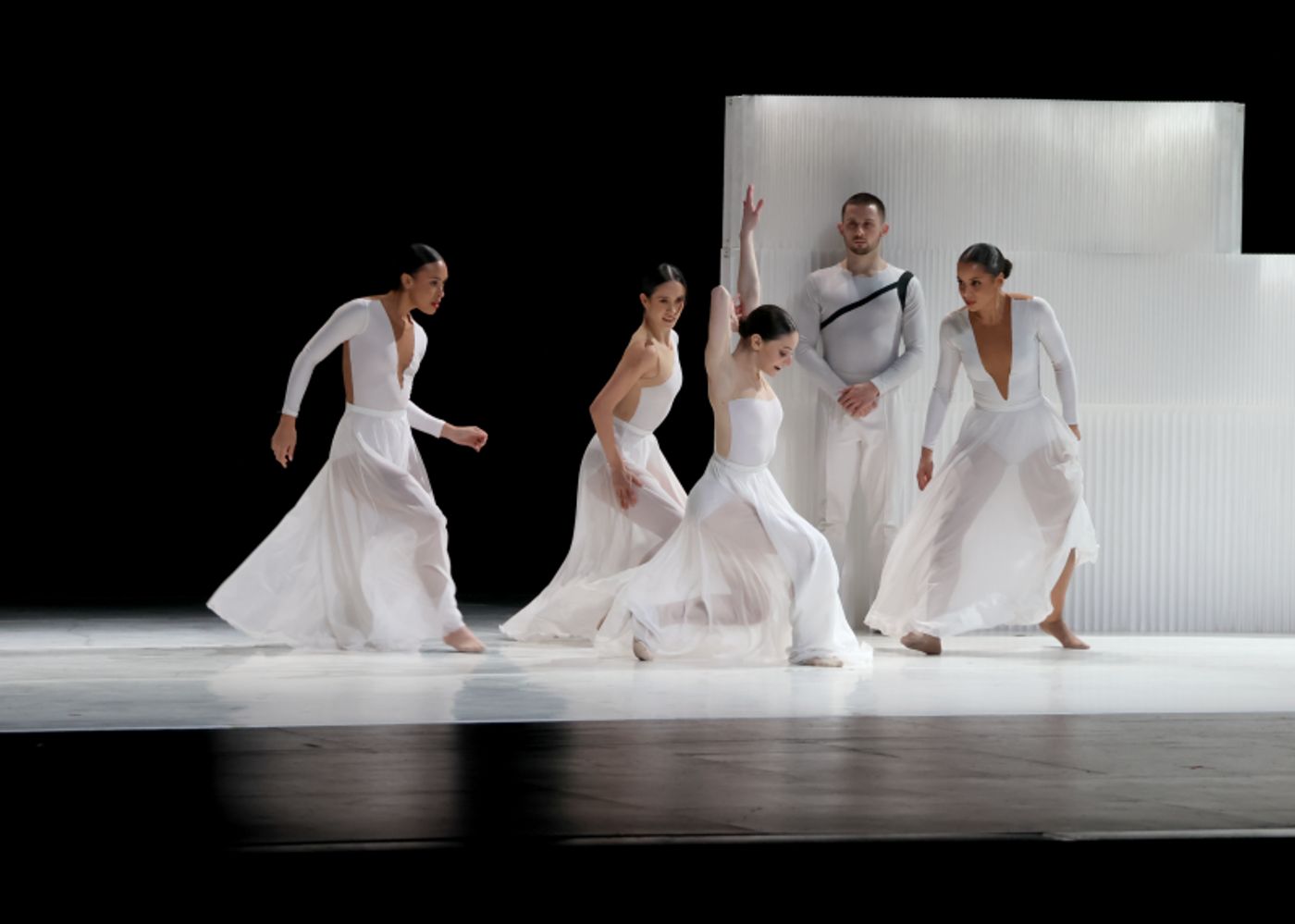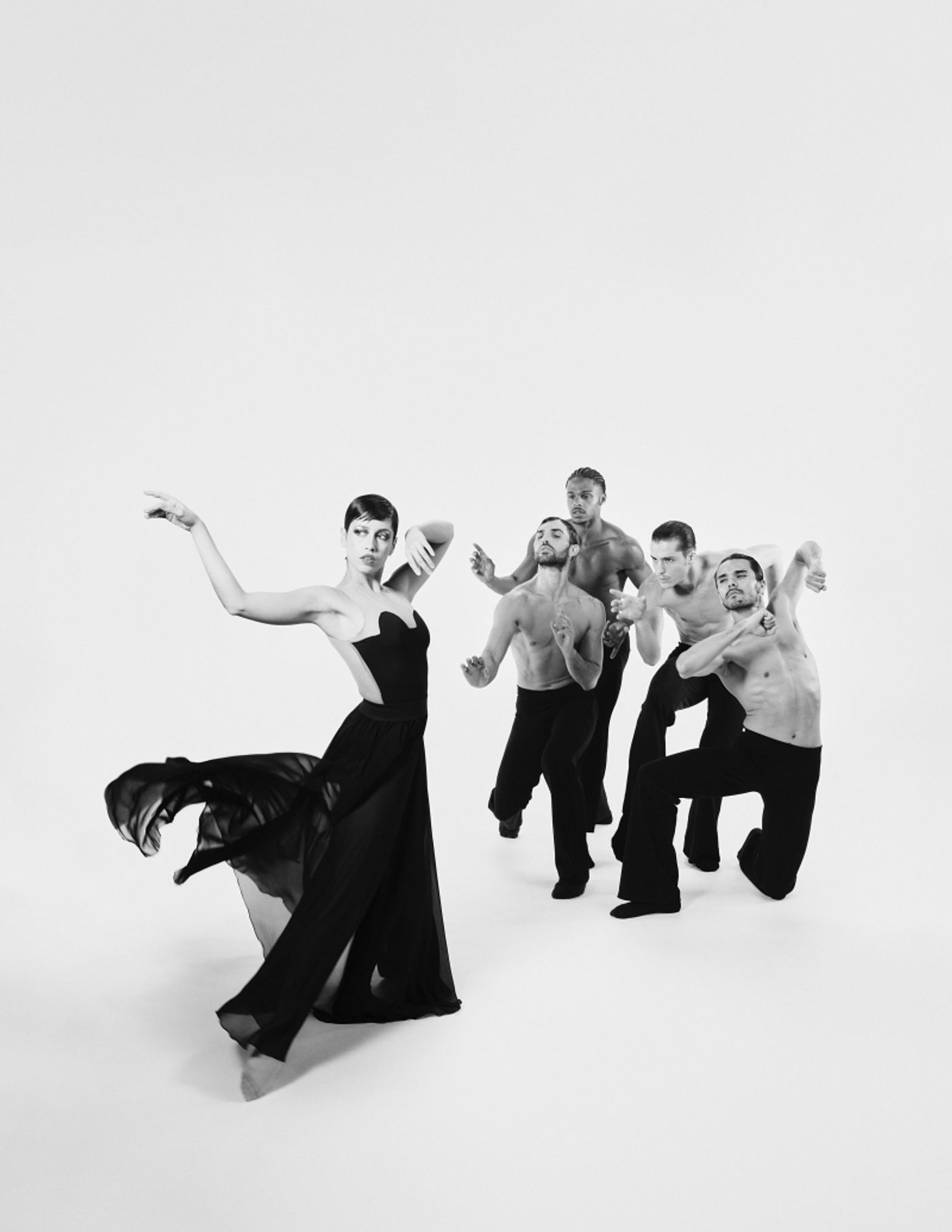Ballet Hispánico’s CARMEN.MAQUIA: Fun But Forgettable
Gustavo Ramírez Sansano’s storytelling ballet, set to George Bizet’s famous opera, has strong moments muddied by clashing creative choices.

Ballet Hispánico’s Carmen.maquia, a retelling of Georges Bizet’s fiery opera, sees the company lean into its strength: allowing a vibrant, Latinx ensemble to tell an authentic story about an iconic woman of color. Performed at New York City Center from May 29–June 1, the very act of staging Carmen.maquia with a Latinx ensemble in today’s climate—when diversity in the arts is increasingly under attack—feels like a quiet act of resistance. But unfortunately, strong intentions don’t guarantee a cohesive or resonant work.
The ballet opens with flair, showcasing the “cigarrera” women—factory girls full of sass and soul—who steal the stage. Their every movement bursts with personality, grounding the story in a vibrant, streetwise realism. These dancers elevate the performance with bold character choices and kinetic energy, sometimes eclipsing the lead roles. In fact, much of the piece’s emotional weight comes not from the principals but from the ensemble’s commitment to storytelling through movement.
Carmen and the toreador Escamillo are the rare principal pair who capture the passion of the source material. Their duet pulses with chemistry and musicality, evoking the tension and seduction that define Bizet’s score. Escamillo is a consistent stand out. His swagger and bravado never borders on caricature. His rivalry with Don José is played with similar restraint, and is defined by a refreshing lack of machismo. However, the lack of development in Don José’s character makes their conflict feel thin. Their duel is like watching two strangers fight; the voyeuristic aspect is the only thing commanding any sort of attention.
 One of Carmen.maquia's strengths lies in its movement. The choreography abandons traditional or even contemporary ballet norms—no soaring leaps or sky-high extensions—in favor of grounded, modern physicality. Dancers perform in flat shoes, further eschewing classical constraints and encouraging more character-driven performance. This shift is effective, particularly for those willing to abandon common beliefs about what makes something “a ballet.”
One of Carmen.maquia's strengths lies in its movement. The choreography abandons traditional or even contemporary ballet norms—no soaring leaps or sky-high extensions—in favor of grounded, modern physicality. Dancers perform in flat shoes, further eschewing classical constraints and encouraging more character-driven performance. This shift is effective, particularly for those willing to abandon common beliefs about what makes something “a ballet.”
 But for all its promise, Carmen.maquia falters. The central relationship between Carmen and Don José lacks drama. Their big duet is partially obscured by a set piece, distancing the audience from both the choreography and the relationship development. Carmen herself is muted—less sultry than her ensemble counterparts—as if audiences should already know who she is and why she is important. Don José, meanwhile, fades into the background, indistinguishable from the male ensemble.
But for all its promise, Carmen.maquia falters. The central relationship between Carmen and Don José lacks drama. Their big duet is partially obscured by a set piece, distancing the audience from both the choreography and the relationship development. Carmen herself is muted—less sultry than her ensemble counterparts—as if audiences should already know who she is and why she is important. Don José, meanwhile, fades into the background, indistinguishable from the male ensemble.
The piece’s emotional pacing also lags. Choreographic moments stretch on without clear crescendo, and iconic musical numbers arrive with little fanfare. But, perhaps most disorienting are the design choices. While minimalism can be powerful, here it is jarring and unsatisfying. The stark, mostly white costumes are bland and unflattering, failing to differentiate characters or clarify storylines. Carmen is in all black, making her appear more like a widow than a siren. A nude mesh used in some costumes mismatches skin tones and feels artificial, breaking the illusion that these are real people. During the wedding scene, it’s nearly impossible to locate Carmen amid the sea of white, undermining a pivotal moment. The set design is also sparse and clinical; full of gray and even more white. Moments staged in front of the curtain— perhaps meant to be intimate— sap the energy. The final scene arrives abruptly, making audiences wonder if they missed something.
While Ballet Hispánico remains an extraordinary company, capable of producing work that thrills, this wasn’t one of those works. Still, the effort and the talent of the ensemble is undeniable. Perhaps it will serve as a way to clear the stage for future triumphs. For now, it remains fun, but forgettable.
Videos

